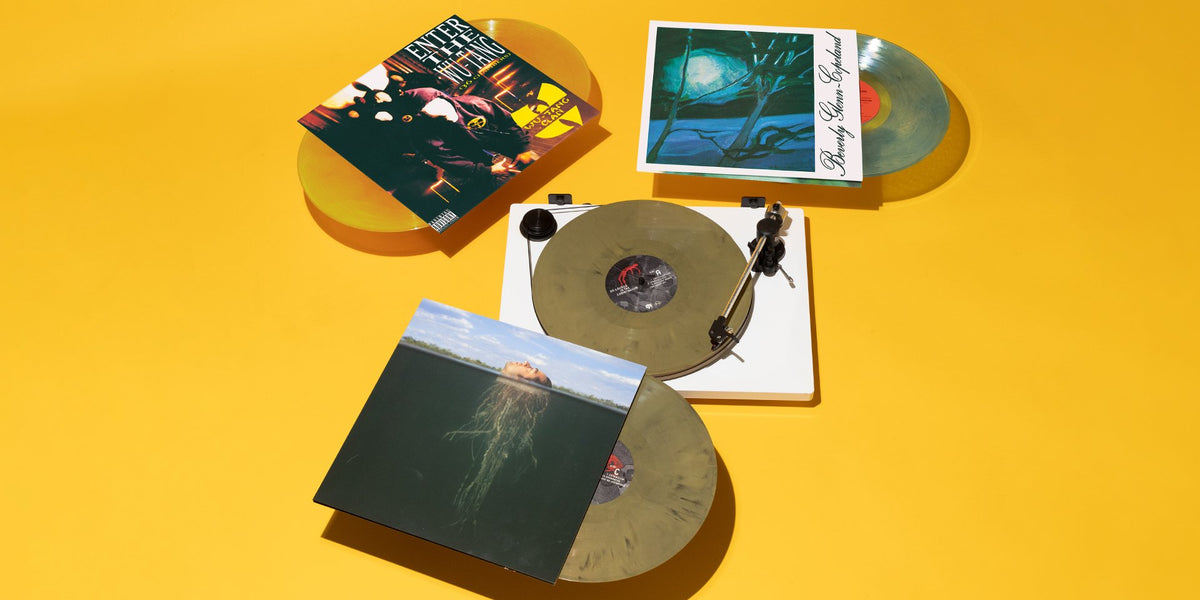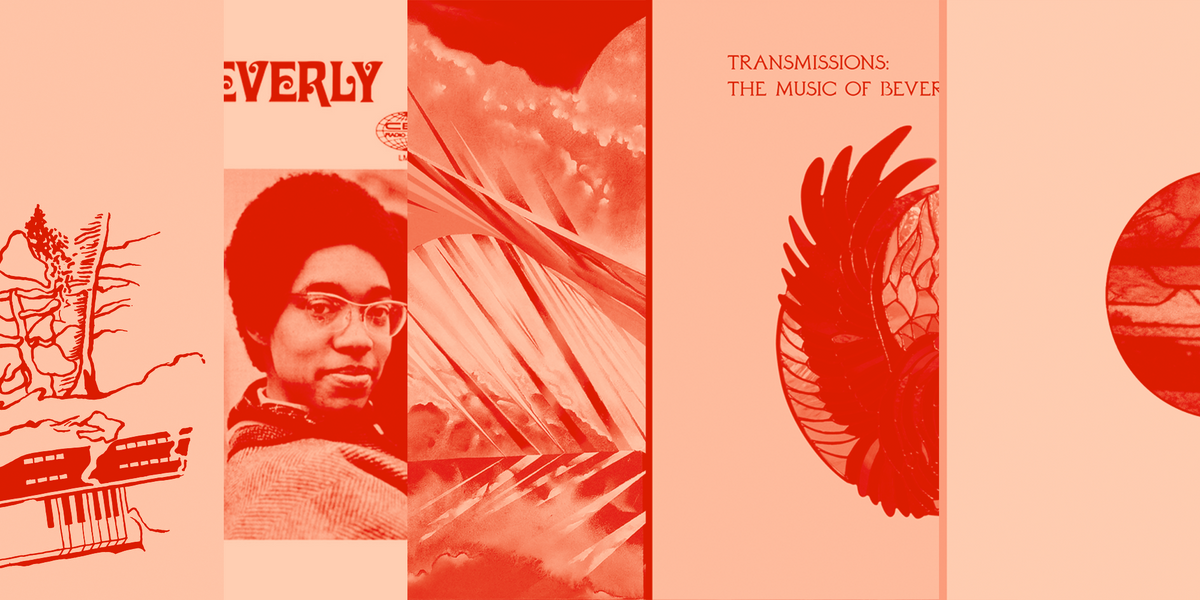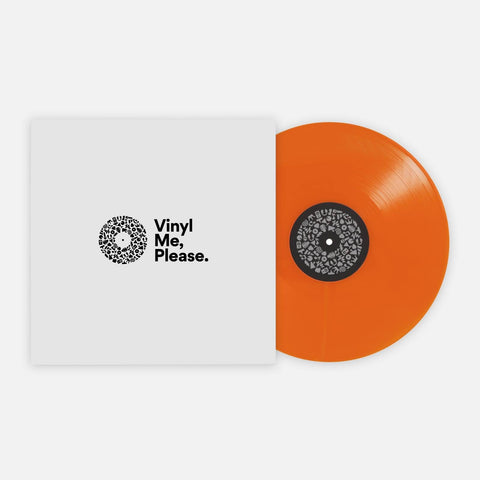Glenn-Copeland’s Unclassifiable Sounds
We Talk to the Artist About His Sophomore Masterpiece
For decades, Beverly Glenn-Copeland’s music lay in wait.
From his earliest folk excursions to the experiments in digital synthesis on which he’d eventually make his name, he worked for most of his life in obscurity, chasing what excited him, transcribing songs that he felt drifted to him on what he’s dubbed the “Universal Broadcasting System.” This is the name he uses to describe the mysterious germination of ideas, which come, sometimes, as if from thin air. His music has taken many forms, and it has always bled outside the lines of genre, to which he’s held a lifelong ambivalence. What’s the use of putting music in a box if it’s too alive, too motile to stay there? Glenn-Copeland cross-pollinated disparate genres long before cross-pollination became standard practice for blockbuster pop and niche experiments alike.
He’s never considered himself a jazz musician, exactly, but Glenn-Copeland’s 1970 self-titled album is as close to jazz as his work gets. It was recorded almost spontaneously, with backing players who wove themselves into the music as it formed. There was no need to rehearse for the sessions that led to the album. Glenn-Copeland, then 26 years old, arrived at Toronto Sound Studios with nothing more than a collection of songs and an acoustic guitar. Producer Doug Riley, who co-owned the studio with Terry Brown, had assembled a band of world-renowned jazz musicians to accompany the young songwriter. Glenn-Copeland had never met any of them before, didn’t even know they were world-renowned. He demoed his songs on guitar for them, each of them just once, which was enough for the group to get a sense of his adventurous, far-reaching style. They dove in. Brown hit the “record” button, and Glenn-Copeland and the band recorded each of the album’s eight songs live in a single take. There were no overdubs or retakes. No one made any mistakes. They finished recording the LP in one night.
Glenn-Copeland’s music was unknown, and then it wasn’t. Toward the end of 2015, he received an email out of the blue from Ryota Masuko, the owner of a specialty Japanese record store called SHE Ye,Ye Records, inquiring after a record he’d made about a decade and a half after the self-titled, in 1986. Written and recorded in rural Canada on an Atari home computer, a Yamaha DX7 synthesizer and a Roland TR-707 drum machine, Keyboard Fantasies had, over the past 30 years, sold maybe 50 copies out of its original 200-cassette run.
Masuko had encountered Glenn-Copeland’s music through a survey of folk records from around the world; the musician’s debut album had quietly become a collector’s item, though his name was still obscure among all but the most devoted of archivists. Then, Masuko happened upon the languid and glowing Keyboard Fantasies and was immediately enchanted. “It was a very emotional experience for me,” he wrote in his initial email query to Glenn-Copeland. He wanted to buy however many copies he had left, and Glenn-Copeland shipped off most of his remaining stock. They sold out quickly, and demand kept up. Within two months, Glenn-Copeland was weighing offers from 10 different record companies to reprint his back catalog. The Toronto record label Invisible City Editions reissued Keyboard Fantasies the next year.
By that point, Glenn-Copeland had been quietly releasing music for nearly half a century. Born in Philadelphia in 1944, he had grown up fully immersed in music. His father, a classical pianist, would play pieces from European repertoires for hours on end in the musician’s childhood home. His mother sang spirituals from her own childhood in Georgia, and encouraged him to sing along, which he did with aplomb. At 17, Glenn-Copeland left the U.S. for Montreal, where he studied classical music at McGill. He was the only Black classical musician in the program. After spending his teen years tamping down his queerness to sate his mother’s protective instinct, he began identifying openly as a lesbian. In Posy Dixon’s 2019 documentary Keyboard Fantasies, Glenn-Copeland, who is transgender, described how his family nearly institutionalized him for openly dating women while he was still legally and socially marked as female.
Despite the stifling social homogeneity that pervaded McGill, Glenn-Copeland found his niche as a Lieder singer, working his way through German and French classical songs from the 18th and 19th centuries. He excelled at the form; his skill earned him an invitation to represent Canada at the Expo 67 World’s Fair. By that point, he had dropped out of college, bought himself a guitar and begun writing songs of his own. In 1969, Glenn-Copeland released his debut LP through the Canadian Broadcasting Corporation, a dark, sparse folk record called, simply, Beverly Copeland.
It’s no surprise that a darkness runs across Beverly Copeland. Even while playing folk, Glenn-Copeland was inflected by the years he’d spent as a Lieder singer. “The classical tradition of Europe was that if something is painful, and it’s an orchestral piece, you spent 20 minutes going through the horrors of it all,” he said in a 2021 interview prior to the VMP reissue of Beverly Glenn-Copeland. “In the songwriting tradition, [Lieder] was written by those same composers — primarily Schubert, Mahler. When they went dark, they went dark. So I came from a tradition where dark was normal.” His songs dwelled on pain and death, rendered rich through his expressive voice. “When I started writing, the darkness was what I knew. Even if I was discussing something that was not my own personal difficulty, I’d wring it out,” he said.
Not long after releasing his debut, Glenn-Copeland, as an Anglophone, decided to leave Montreal to the Quebec separatist movement that had been brewing. He relocated to Toronto. “It was called ‘Toronto the Good,’” he recalled. “Nobody locked their door. It was a sleepy, big city that was really safe.” It also proved to be a fertile environment for a young musician beginning to forge his own voice. “There was a lot of places that were supporting folk music. There were lots of places that were supporting jazz. It was a great city to move to,” he said.
Glenn-Copeland started playing his songs live at venues around the city. Doug Riley caught one of his shows, and, impressed, invited him to cut an album at Toronto Sound Studios. (The space would later become hallowed ground in the world of prog; Rush would go on to record some of their biggest albums there from 1973 to 1976.) Glenn-Copeland arrived at the session wide-eyed at the state-of-the-art equipment, unsure of what to expect. Almost immediately, the band Riley had put together — guitarist Lenny Breau, bassist Doug Bush, percussionist Don Thompson and drummer Terry Clark — made him feel at ease.
“I showed up, and there were these incredible jazz musicians. I didn’t even know who they were. I was so out of it,” he recalled. “I knew how incredible they were when they started playing. I was like, ‘Oh my gosh. Who are these people?’ They were so sweet, too. They went, ‘Well, play us the piece. How does it go?’ Because they didn’t hear it ahead of time. I just went, ‘OK, it goes like this.’ And they went, ‘Oh, isn’t that lovely?’ The tech guy hit the button to start recording, and they played it all, first take off the floor, live, brilliantly, having only heard it a few minutes before. At the end of the first piece I thought, ‘Oh my God, a bunch of geniuses — I don’t even know who these guys are!’ Turned out they were all internationally known. It’s called innocence.”
The first song the group laid to tape became the album’s first track, “Colour of Anyhow,” a song that Glenn-Copeland would continue to perform live after the 21st century resurgence of his music brought him to audiences around the world. His voice on the record sounds earthy, muted, tentative. The band matches him with pearly guitar ad-libs and gently brushed cymbals. The musicians make plenty of space for each other, feeling each other out. By track two, the brooding “Ghost House,” they’ve started egging each other on, the flute making playful jabs at the bass and the bass returning them. And as the record rolls on, as the band gets warmer and warmer and more animated, Glenn-Copeland’s voice awakens, too. He lifts away from his tessitura, straining toward the edges of his register, then vaulting up into his skilled falsetto. The energy of each player animates everyone else in the room.
“I was infused by their brilliance,” Glenn-Copeland said. “I was not nervous. It was like I was in a trance because of what they were supplying. I was on this cloud.”
By the time they reached “Erzili,” the album’s 10-minute closing track, Glenn-Copeland and the band were flying. The song shares a name with a West African goddess of love, and boasts lyrics about the kind of infatuation that rends the world as it stands. “Thou hast possessed me / I can dance upon the water / I can dance upon the sunrise / I can dance upon the clouds / I can dance upon the rainbow,” Glenn-Copeland sings. If the darkness he dwelled on in previous work dealt with the foreclosure of possibility, dwelling on what wasn’t there and what could never come to pass, his second album’s highlight comes alive in envisioning the impossible made real. Someone falls in love and dances across a rainbow. The way he sings it, there’s no choice but to believe him.
Behind him, his band believes it, too. They follow his anxious strumming pattern, the drums darting in and out of each beat, the guitar lines flickering and then dissipating, the flute glancing off the riffs. In the breakdown, Glenn-Copeland hammers away on the muted strings of his acoustic, turning melody into percussion as the bass winds around him. (He drummed away so hard on the instrument, he accidentally caught his high E string beneath a fret — he quickly loosed it and kept playing.) His voice takes off, leaving words behind, vaporizing into its surroundings. There’s heat among the group as they split off from each other and then cohere. By this point in the session, they’re merged, no longer strangers. Glenn-Copeland’s songs, unknown to the band just a few hours prior, find a home among them.
Beverly Glenn-Copeland marks a point where the young composer began to branch off from the classical tradition, to seek out what pleased him and integrate it into his own work. “At a very young age, I found that I liked just about all the music I ever heard,” he said. “I was finally letting myself explore music from around the world more.” Lieder’s imprint had started to leave him: “That tradition was starting to disappear from my body,” he said. In its place flowed North American folk and jazz, and music from Asia and Africa. These newer influences made an electric combination. They also made the work largely unclassifiable in the era of record stores’ neatly delineated sections.
“I was considered to be a jazz musician. A riot, right? Because I wasn’t anything like a jazz musician,” Glenn-Copeland said. “The album was put in the jazz section. They didn’t know what to do with it. Anyone who would listen to it would go, ‘This is not exactly jazz.’ We didn’t know how to categorize it in those days. It was not categorizable, really. It got lost on some shelf or another.”
In the decades since and the work that followed, the work that continues now, Beverly Glenn-Copeland’s freeform daring has only grown. It was hard, for some time, to find the place where that spirit fit. But the music was patient. Years after it stirred up the air in that well-insulated room in Toronto, it has found where it was going. It washes over those who have been lucky to find Glenn-Copeland’s music, to be moved by what he does — what he reaches for, and ignites in his reaching, and clarifies in the flame.
Sasha Geffen is the author of Glitter Up the Dark: How Pop Music Broke the Binary (University of Texas Press, 2020). Their writing on music, gender and technology also appears in Artforum, The Nation, Vulture, The Chicago Reader, Pitchfork and other publications. They live in Colorado.
Related Articles
Join the Club!
Join Now, Starting at $36Pages







